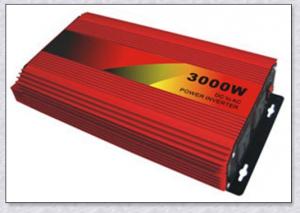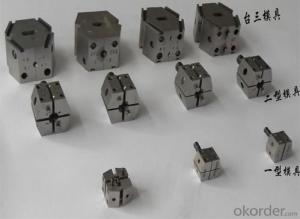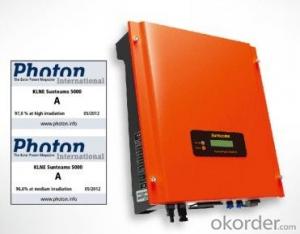Solar Edge Inverter Wifi
Solar Edge Inverter Wifi Related Searches
Ac Inverter For Solar Panels Solar Panel With Ac Inverter Gas Furnace With Ac Panda Hot Water Bottle Cover Minion Hot Water Bottle Cover Abb Solar Water Pump Inverter Solar Water Pump Philippines Extra Long Hot Water Bottle Solar Panel Dc To Ac Inverter Old Fashioned Hot Water BottleHot Searches
Solar Edge Inverter For Sale Fiberglass Scaffolding For Sale Fiberglass Panels For Sale Fiberglass Greenhouses For Sale Type Of Scaffolding With Pdf Solar Inverter With 2 Battery Pedestal Fan With Water Spray Price Mini Inverter With Battery Online Shopping Solar Edge Inverter Price Ceiling Fan Lowest Price Solar Edge Inverter Sizes Type Of Inverter For Solar Types Of Inverter For Solar Used Solar Inverter For Sale Inverter Size For Solar System Solar Edge Inverter For Sale 5kw Solar Inverter For Sale Solar Inverter For Sale Solar Inverter For Battery Solar Inverter For Split AcSolar Edge Inverter Wifi Supplier & Manufacturer from China
Okorder.com is a professional Solar Edge Inverter Wifi supplier & manufacturer, offers integrated one-stop services including real-time quoting and online cargo tracking. We are funded by CNBM Group, a Fortune 500 enterprise and the largest Solar Edge Inverter Wifi firm in China.Hot Products
FAQ
- A solar inverter handles voltage dips or surges in the grid by incorporating various protective mechanisms. During a voltage dip, the inverter's control system detects the change and adjusts its power output accordingly to maintain a stable voltage and frequency. It may also utilize energy storage systems to compensate for the temporary drop in grid voltage. In the case of voltage surges, the inverter employs surge protection devices to prevent damage to the system. Additionally, advanced inverters may have built-in voltage regulation capabilities to stabilize the output voltage even during significant fluctuations in the grid.
- A solar inverter synchronizes with the grid by continuously monitoring the grid's voltage and frequency. It adjusts its own voltage and frequency accordingly to match the grid, allowing the solar power to flow seamlessly into the grid. This synchronization is important to ensure the safe and efficient operation of the solar power system, as well as to prevent any disturbances or damage to the grid.
- No, a solar inverter cannot be used with a string inverter system. Solar inverters and string inverters are two different types of inverters that serve different functions in a solar power system. A solar inverter is designed to convert the DC power generated by solar panels into AC power for use in homes or businesses. On the other hand, a string inverter is used to convert the DC power generated by multiple solar panels connected in series, known as a string, into AC power. Therefore, these two types of inverters are not compatible with each other.
- The safety features of a solar inverter typically include protection against overvoltage, overcurrent, and short-circuit conditions. They also often have built-in ground fault protection and insulation monitoring to detect any faults in the system. Additionally, many solar inverters have anti-islanding features to prevent them from operating during a power outage, ensuring the safety of utility workers.
- The role of a solar inverter in a solar panel system is to convert the direct current (DC) generated by the solar panels into alternating current (AC) that can be used to power household appliances and be fed into the electrical grid. It also ensures maximum power output and efficiency from the solar panels by constantly tracking the maximum power point.
- A solar inverter converts DC power into AC power through a two-step process. Firstly, it uses a semiconductor component called a power switch to chop the DC input voltage into small pulses. Then, it employs a filter to smooth out these pulses, transforming them into a continuous waveform, which is the desired AC output power. This conversion enables the solar inverter to supply electricity that is compatible with standard AC appliances and can be used in homes, businesses, and the electrical grid.
- The role of a fault detection feature in a solar inverter is to monitor and identify any abnormalities or malfunctions in the system. This feature plays a crucial role in ensuring the reliable and efficient operation of the solar inverter. A fault detection feature is designed to constantly monitor the various components and parameters of the solar inverter, including input voltage, output voltage, current levels, temperature, and other critical parameters. It analyzes the data in real-time and compares it with predefined thresholds or expected values. If any parameter deviates from the normal range or exceeds the set limits, the fault detection feature immediately identifies it as a fault or abnormality. The primary purpose of this feature is to protect the solar inverter from potential damage and prevent any possible safety hazards. By promptly detecting faults, it enables the inverter to take appropriate actions to mitigate the issue or to shut down the system if necessary. This helps in avoiding further damage to the inverter or other connected devices. Additionally, the fault detection feature aids in troubleshooting and diagnosing the root cause of the fault. It provides valuable information about the type and location of the fault, facilitating quicker and more accurate repairs or maintenance. This reduces downtime and ensures the optimal performance and longevity of the solar inverter. Furthermore, the fault detection feature plays a vital role in system monitoring and maintenance. It provides valuable data and alerts to the system operator or maintenance personnel, enabling them to proactively address any potential issues. This helps in maximizing the uptime of the solar inverter and minimizing the overall maintenance costs. In summary, the fault detection feature in a solar inverter is responsible for continuously monitoring, identifying, and responding to any faults or abnormalities in the system. It acts as a protective mechanism, ensuring the safe and reliable operation of the inverter, enabling quick troubleshooting, and facilitating efficient maintenance practices.













































